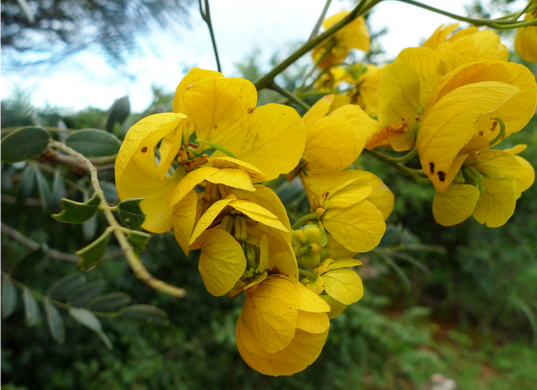News Excerpt:
The Kerala Forest Department has decided to extract invasive plants like Senna spectabilis, which have posed a major threat to wildlife habitat in the Nilgiri biosphere.
More about the news:
- It will be done with the support of Kerala Paper Products Limited (KPPL) to give a fresh lease of life to the habitats in the State, especially the Wayanad Wildlife Sanctuary (WWS).
- The department is gearing up to remove exotic species following a favorable court order issued by the Chennai High Court last year. According to it, if a plant has been declared as a weed it can be extracted even from protected areas.
- The Mudumalai and the Sathyamangalam tiger reserves in Tamil Nadu began extracting the senna tree after convincing the gravity of the situation to the Court and obtaining the order.

About Senna Spectabilis:
- It is a tree with a very dense, spreading crown; which can grow 7 - 18 metres tall.
- It can be evergreen in climates with rain all year round but can become deciduous in areas with dry seasons.
- Habitat:
-
- Dryland forest in northeast Brazil, most commonly in open formations, favoring deep, well-drained, fertile soils.
-
- Moist and seasonally dry forests including pine and coastal forest, disturbed or secondary woodland, and savannah.
- Uses:
- The tree is harvested from the wild for local use as a medicine and source of wood.
- It can be grown as a hedge and, because it produces an abundance of bloom over a long flowering period, it is often grown as an ornamental in gardens, parks, along streets and also to provide shade.
- Conservation status:
- The plant is classified as 'Least Concern' in the IUCN Red List of Threatened Species (2011).
- The reason behind its eradication:
- As an invasive species, its dense foliage suppresses the growth of native trees and grasses, posing a significant threat to biodiversity.
- The income from the project would be utilized for eco-restoration.
|
Nilgiri Biosphere:
Objectives:
|



